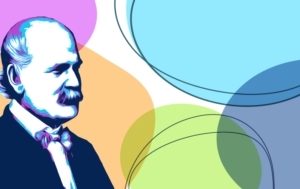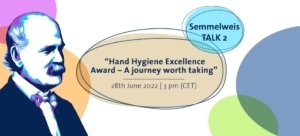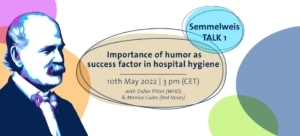The knee-jerk reaction to reject new evidence because it contradicts established beliefs is named after Dr. Ignaz Semmelweis (1818-1865). The physician discovered a visionary way to save countless lives – only to have his own life destroyed when his theories were ridiculed.
Imagine the Viennese general hospital in the 1840s: The biggest medical institution in the Austro-Hungarian capital, it was a center at the forefront of European science, where doctors not only cared for patients, but also performed autopsies to learn more about the human body and trained students. Therefore, it came as a surprise to Dr. Ignaz Semmelweis, at that time an assistant physician in the maternity department, that the number of women who died of childbed fever was alarmingly high: At times, almost every third woman died while giving birth.
The young doctor was horrified to learn that in his department, where doctors and medical students worked, the mortality rate was much higher than in the second department, where midwifery students were trained. After many setbacks – his increased examination of young mothers temporarily leading to even more deaths – he figured out what germ theory would explain years later: Doctors and students working on cadavers and other patients were transmitting pathogens to women in childbirth.
When Semmelweis ordered fellow doctors to not only wash their hands, but disinfect them and their instruments with chlorine before seeing patients, the mortality rate dropped to 1,27 percent – an unprecedented low at the time.
Emotional science
Despite his clear and well documented evidence, Semmelweis’s efforts to introduce hand washing and disinfecting after every treatment, received little support from his colleagues. His hypotheses – that lack of hygiene was the main factor in childbed deaths – was largely rejected and even mocked by the medical community. What were the causes of this resistance?
Experience has shown that generally accepted truths and common beliefs influence the judgment of new ideas, even among scientists and experts. At the time, the prevalent medical theory held that diseases were transmitted by “miasma”, meaning the bad air caused by rotten matter. Therefore, it was seen as dangerous to be in poor hygienic conditions or in a room with a decaying body, but no one could’ve ever imagined people or objects carrying invisible particles with them. Semmelweis’ discoveries hit the self-image of physicians at a sensitive point. A doctor as the author of death and illness instead of a lifesaver was an unacceptable idea that most did not want to accept. The medical community was unable to look beyond their existing opinions and bias.
This shows that in the struggle for truth, in addition to objective evidence emotions play a central role. It is not uncommon for a new discovery to cause a scientist’s entire life’s work to collapse because it is based on an error. Especially for experts and renowned professionals it’s understandably difficult to accept new facts if they contradict basic “truths” they based their work and career on. In science philosophy, the expression “Semmelweis reflex” or “Semmelweis effect” describes the tendency to reject an innovation in advance, without disproving it.
The dangers of being an innovator
Ignaz Semmelweis paid a heavy price for contradicting the beliefs of his time: He was dismissed from the Viennese hospital and excluded from the medical community. He wouldn’t let the issue go and began writing open letters to prominent European childbirth specialists, at times denouncing them as irresponsible murderers. Semmelweis became increasingly erratic and depressed. His contemporaries, including his wife, believed he was losing his mind, and in 1865 he was committed to a lunatic asylum. He died there of septic shock only 14 days later, possibly as the result of being severely beaten by guards, at age 47.
Semmelweis’s practice earned widespread acceptance only years after his death when French biologist Louis Pasteur further developed the germ theory of disease, offering a theoretical explanation for Semmelweis’s findings. Today, he is considered a pioneer of antiseptic procedures. However, it took generations of doctors to implement Semmelweis’ measures, causing innumerable tragic deaths.
So, how can we prevent the Semmelweis reflex? According to psychologists, the willingness to imagine the point of view of the other person reduces the danger of the knee-jerk reaction to dismiss new, difficult ideas. It is also important to asses one’s beliefs: Are they based on current scientific facts? Would I be open to theories that challenge them? Perhaps as a lesson from Semmelweis’ tragic life, medical schools all over the world not only teach about his discoveries on hygiene, but also about the Semmelweis effect and the danger of rejecting new ideas.
More on the subject: An interview with political scientists on her Semmelweis-inspired research project “Negotiating Truth” at the University of Vienna. Negotiating Truth – Viennese research project is based on Semmelweis – Semmelweis Foundation
Photo credit: Guy photo created by kroshka__nastya – www.freepik.com




